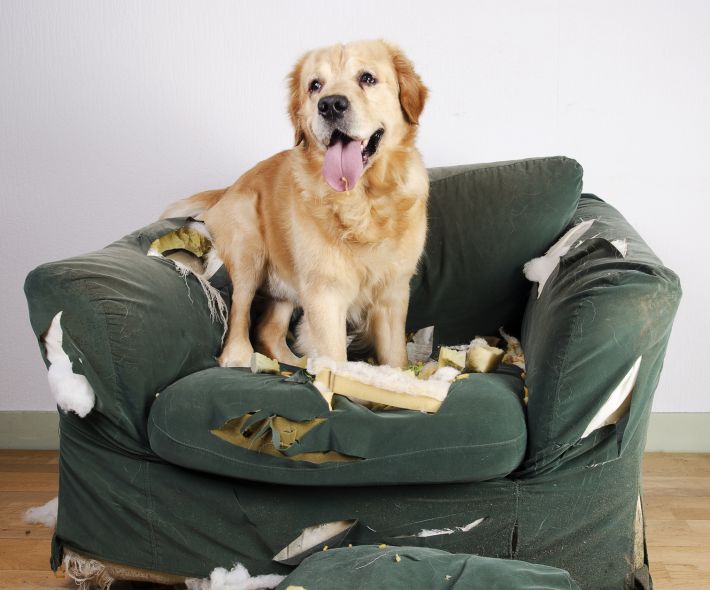Does your dog whine and bark all the time whenever you leave your house? Or do you come back home, only to see your furniture being scratched or your letters being shredded into pieces? These are telltale signs that your dog is suffering from Separation Anxiety. Separation Anxiety is in fact the most common problem amongst dogs who are domesticated. These dogs are too accustomed to having humans around them, and when we do leave them alone in the house for long periods of time, they cannot cope with the sudden lost of a companion. This is very different from dogs who are not domesticated as they can run around in the wild and they are not used to having humans around them.
Separation Anxiety in dogs is a known problem, but many owners do not know how to handle it. They end up buying furniture that is pet-proof (no such thing by the way) and they start to shift their smaller items on tables that are not easy for dogs to reach. These are in fact short term solutions, and it doesn’t nip the problem in the bud. In this article, we will be giving you some tips and tricks for preventing Separation Anxiety in your dog
Let us first visit some of the triggers that can be the cause of your dog’s Separation Anxiety issue.
- Left alone in the house
- New famiy member
- Unfamiliar environment
- Left alone with unfamiliar faces
As owners, we should always recognize the triggers that can cause the issues with our dogs, and we should try to ease them slowly to be comfortable with the above mentioned situations.
These are some of the tips and tricks for preventing Separation Anxiety in your dog,
Behavioral Modification

By behavioral modification, we do mean conditioning your dog to react in a certain manner when the trigger is present. One of the best ways is to crate-train your dog. Before you leave for work, you can put the dog into the dog crate and cover it with a cloth. This helps to reduce stress in the dog. If you prefer, a dog house works perfectly fine too. The dog crates or dog houses serve as a comfort zone for your dog in stressful events like this, and your dog will soon associate these places as safe zones too.
Another way to engage Behavioral Modification in your dog is to start regular exercises with them. This helps to reduce stress and ultimately Separation Anxiety in them. Also, when tired, dogs are more receptive to the commands given by the owner.
Keeping The Dog Occupied
One of the more conventional ways to prevent Separation Anxiety is to distract the dog. There are various ways you can do this, and one of the easiest way is to switch on the TV or the radio. These distractions help to keep the dog from thinking that they are alone.
Or, you can simply purchase interactive toys to keep the dog occupied. These toys too help to stimulate the dog physically and mentally, and it is one of the best ways to prevent Separation Anxiety in your dog. There are many of these interactive toys in Amazon, and a quick search on it gave me this.
Interval Training
By interval training, we do not mean training your dogs like how athletes do. What we are suggesting, is that you can practice separation intervals with your dog. Leave your house for a short period of time, for maybe 10 – 20 mins or so. Let the dog be accustomed to you not being in the house. Keep doing this until the onset of Separation Anxiety is minimized, and you should gradually increase the separation timings. This is also considered as conditional training, and in the long run you will be able to be out of the house for long periods of time.
